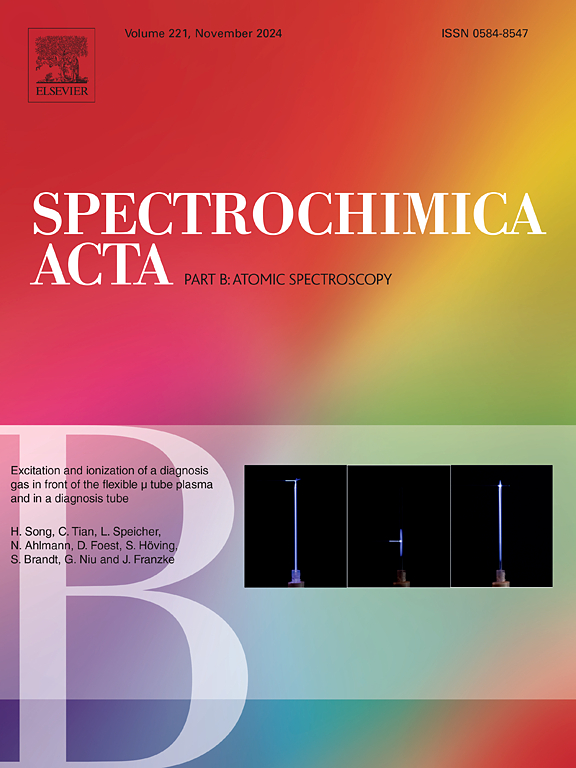利用全反射 X 射线荧光了解合金元素 Cr、Ni 在核级奥氏体不锈钢 304 L 侵蚀-腐蚀过程中的作用
IF 3.2
2区 化学
Q1 SPECTROSCOPY
引用次数: 0
摘要
不锈钢(SS)作为应用最广泛的工业材料之一,已经占据了不可或缺的地位。在核工业中,它是用于压力管、安全壳和后处理相关应用的技术上最重要的结构材料之一。事实上,SS 304 L 是后处理厂的主力材料,它面临着酸、温度和高辐射剂量等恶劣条件。这些条件会影响材料的侵蚀-腐蚀行为,并导致机械性能变差。这也会影响反应堆部件的寿命。本研究采用全反射 X 射线荧光 (TXRF) 技术,对 SS 进入腐蚀性硝酸介质中的主要元素和次要元素损失的腐蚀速率 (CRs) 进行了深入了解。研究了酸摩尔浓度和温度对 SS304L 侵蚀-腐蚀行为的影响。TXRF 研究表明,在 2 M HNO3 中 CR 值最大,而在 8 M HNO3 中 CR 值最小,这表明硝酸的摩尔浓度在腐蚀中起着重要作用,而且随着摩尔浓度的增加,SS 304 L 的钝化也会增加。浸入硝酸介质中的铁、铬和镍的浓度进一步证实了这一观察结果。此外,还研究了合金元素铬和镍在 SS 钝化中的作用。温度的影响表明,与 25 °C 和 90 °C 温度相比,45 °C 温度下的腐蚀速率最小,这表明在该温度下形成氧化铬钝化层在热力学上是最有利的。本文章由计算机程序翻译,如有差异,请以英文原文为准。

Understanding the role of alloying elements Cr, Ni in erosion–corrosion process of nuclear grade austenitic stainless steel 304 L by total reflection X-ray fluorescence
Stainless steel (SS) has gained an indispensable position as one of the most widely used industrial material. In nuclear industry, it is one of the technologically most important structural materials used in pressure tube, containment vessel and reprocessing-related applications. In fact, SS 304 L is the workhorse material of the reprocessing plant which faces the hostile conditions of acid, temperature as well as high radiation dose. These conditions can affect the erosion-corrosion behavior of the material and can lead to poor mechanical properties. This also affects the life of the reactor components. In the present study, a systematic work has been carried out to develop an in-depth understanding of the Corrosion Rates (CRs) with respect to the loss of major and minor elements from SS into the corrosive nitric acid medium using Total reflection X-Ray Fluorescence (TXRF). The effect of acid molarity as well as temperature, on the erosion-corrosion behavior of SS304L was studied. The TXRF studies have revealed that the CR was maximum in 2 M HNO3 and minimum in 8 M, showing that the nitric acid molarity has an important role to play in the corrosion and as the molarity increases, the passivation of SS 304 L also increases. This observation was further corroborated with the concentrations of Fe, Cr and Ni, which had leached into the nitric acid medium. The role of alloying elements, Cr and Ni, in the passivation of SS was also studied. The effect of temperature showed that at 45 °C, the rate of corrosion was minimum, as compared to at 25 °C and 90 °C which reveals that the formation of chromium oxide passive layer was thermodynamically most favorable at this temperature.
求助全文
通过发布文献求助,成功后即可免费获取论文全文。
去求助
来源期刊
CiteScore
6.10
自引率
12.10%
发文量
173
审稿时长
81 days
期刊介绍:
Spectrochimica Acta Part B: Atomic Spectroscopy, is intended for the rapid publication of both original work and reviews in the following fields:
Atomic Emission (AES), Atomic Absorption (AAS) and Atomic Fluorescence (AFS) spectroscopy;
Mass Spectrometry (MS) for inorganic analysis covering Spark Source (SS-MS), Inductively Coupled Plasma (ICP-MS), Glow Discharge (GD-MS), and Secondary Ion Mass Spectrometry (SIMS).
Laser induced atomic spectroscopy for inorganic analysis, including non-linear optical laser spectroscopy, covering Laser Enhanced Ionization (LEI), Laser Induced Fluorescence (LIF), Resonance Ionization Spectroscopy (RIS) and Resonance Ionization Mass Spectrometry (RIMS); Laser Induced Breakdown Spectroscopy (LIBS); Cavity Ringdown Spectroscopy (CRDS), Laser Ablation Inductively Coupled Plasma Atomic Emission Spectroscopy (LA-ICP-AES) and Laser Ablation Inductively Coupled Plasma Mass Spectrometry (LA-ICP-MS).
X-ray spectrometry, X-ray Optics and Microanalysis, including X-ray fluorescence spectrometry (XRF) and related techniques, in particular Total-reflection X-ray Fluorescence Spectrometry (TXRF), and Synchrotron Radiation-excited Total reflection XRF (SR-TXRF).
Manuscripts dealing with (i) fundamentals, (ii) methodology development, (iii)instrumentation, and (iv) applications, can be submitted for publication.

 求助内容:
求助内容: 应助结果提醒方式:
应助结果提醒方式:


